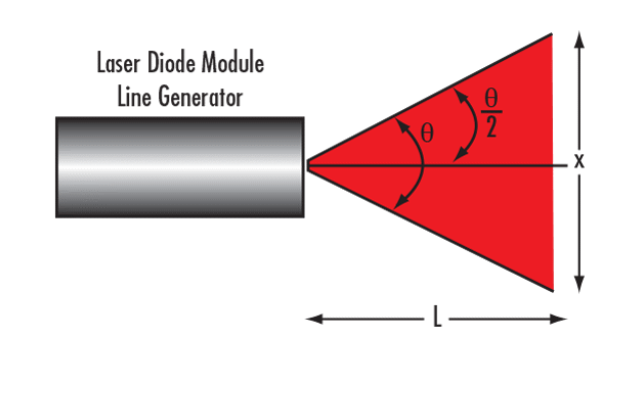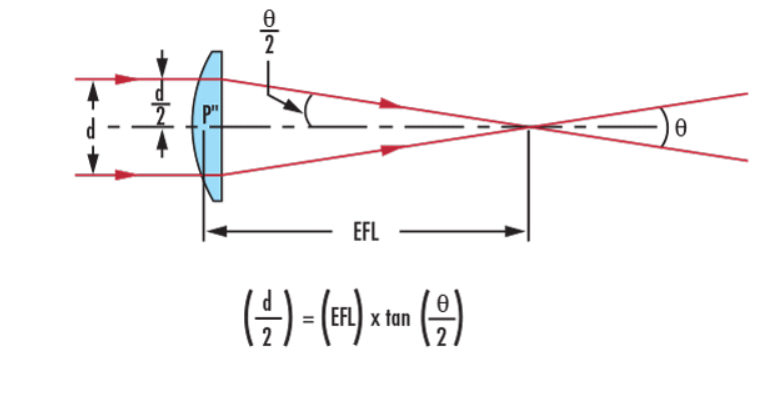A cylindrical lens is a type of lens with different radii along the X - axis and Y - axis. Therefore, the shape of the lens is cylindrical or semi - cylindrical, and there is image magnification only along a single optical axis. Cylindrical lenses are commonly used as laser line generators to adjust the image height, or to correct astigmatism in imaging systems.

When using a cylindrical lens as a laser line generator, it is crucial to calculate the effective focal length (EFL) required for the application. To do this, first calculate the fan - angle (θ) using the given working distance (L) (in centimeters) and the desired line length (x):

The fan angle can also be used to determine the line length at a given working distance


Then, the effective focal length (EFL) can be calculated using the input beam radius (d2) and the following formula.


Typically, laser diodes emit elliptical beams, which may not be suitable for applications requiring a parallel, circular laser source. A common method to convert an elliptical beam into a circular one is to use two cylindrical lenses. The first lens magnifies the short - axis of the laser diode, while the second lens collimates the beam. The curved surface of the lens and the short - axis of the laser diode should be oriented in such a way that the short - axis can be magnified.
For example, to convert an elliptical beam with a major axis of 4.0 mm and a minor axis of 1.0 mm into a circular beam with a diameter of 4.0 mm, the minor axis must be magnified by a factor of 4. The magnification (Mag) of the two - lens setup can be calculated by dividing the focal length of the second lens (f2) by the focal length of the first lens (f1).
